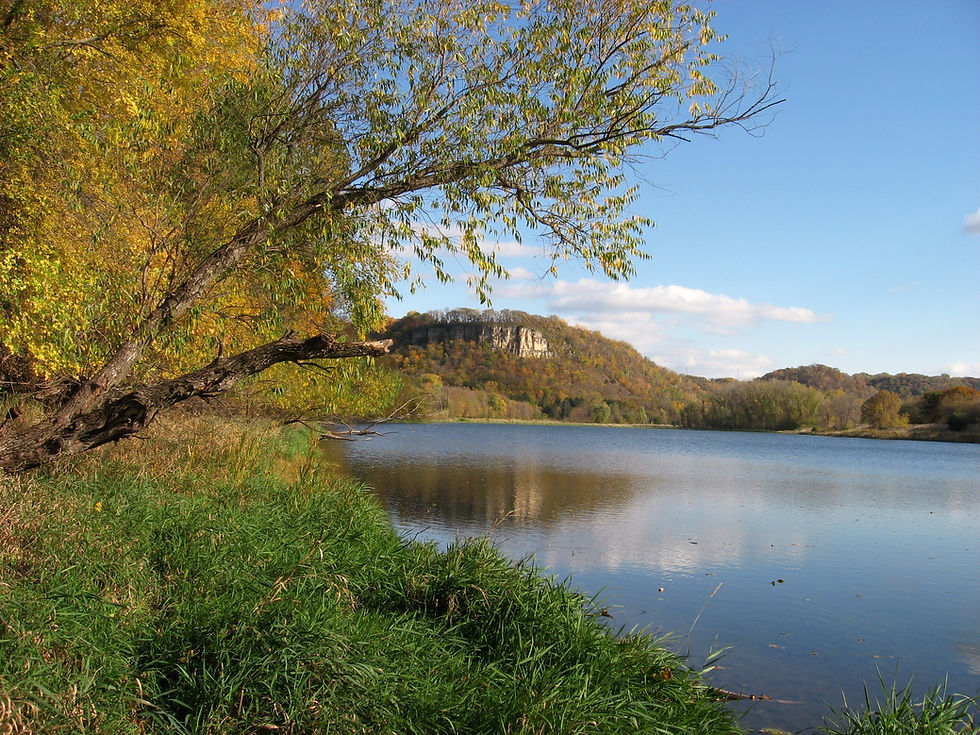"New Arrival, Flowering Trees and Sharing A 15 Year Adventure With Backyard Wood Ducks"
- wacoutanaturenotes
- Jun 9
- 3 min read
Updated: Jun 10

On May 24th, our daughter Karla and I observed four monarchs out in the Wacouta Prairie as we walked on the trail. They were our first sightings in 2025.
In September of 2024, I observed a significant migration of monarchs on their to the mountainous regions of central Mexico. There they cluster in oyamel fir forests where the micro climate allows them to conserve energy.
The monarchs we observed on the 24th were the third generation of those fall migrants.

No doubt you have observed the past couple weeks, the very large trees in full bloom with drooping white clusters of white drooping pea-like fragrant pea-like blossoms. There are large groups these trees near the Wacouta Town Hall and the north shoreline on Wacouta Pond.

The wood from these trees is very hard, heavy and strong which made them useful for posts and railroad ties. Live stock have been fatally poisoned by eating young shoots and browsing on it's poisonous bark.
I have learned from experience the paired sharp thorns easily puncture bicycle tires on the bike trail.

A number of years ago, we had an artificial pond excavated in our lower backyard. The pond was lined with a sheet of heavy plastic covered by a protective layer of sand.
Snow melt and rain events provided water to fill the pond. To enhance the supply of water, we placed an underground drain tile which captured water from the roof on the south side of our house.
This effort provided hours of entertainment for us not to mention learning so much about the nesting behavior of wood ducks over a 15 year period,

Two artificial nesting boxes were placed near the edge of the pond. The pond and boxes were within easy view from our kitchen and sun room. Over the years, we would begin observing wood ducks during the month of April. It was fairly common to see small flocks flying overhead and periodically a pair would land on the pond.
It turned out that the real serious nesting activity would take place during the month of May. While the hen would be inside the box checking it's suitability, the drake would rest on top searching for potential sign of danger.

Once the decision was made to establish a nest, the hen would enter the box and lay one egg each day until her clutch size (usually 6 to 12 eggs) was met. Her time spent in the box was very brief sometimes 5 to 10 minutes.
Before exiting the box, she would cover the eggs with down from her breast. This absence from the box, provided me with the opportunity to open the box and count eggs. From that count, I could determine when the first egg was laid.

Once incubation starts, she will only leave the nest for a few minutes early in the morning and just before dark to feed and get water.
Acting quickly, I would go down and get a final count on the total number of eggs determining when incubation actually started. Approximately 26 to 35 days later, hatching would occur.

Starting in the afternoon of Day 26, I would quietly walk down and stand under the nesting box and listen for evidence of newly hatched ducklings. If I heard anything, I would know that the next morning they would exit the box. The hen keeps the ducklings in the box overnight to dry off and gain strength for the big day ahead.
Early the next morning, I would go down and quietly get into my photography blind and wait for their exit. The hen would stick her head out of the box at least three times to make sure it was safe to come out.
Once satisfied, she would quickly jump out of the box and start calling on her way to the ground. Like popcorn, the tiny birds would follow in rapid succession. Keep in mind, they are not yet capable of flying.

Once all the youngsters were on the ground and accounted for, she would gather them and seek safety among the aquatic vegetation. After a short period of time, they would strike out for the river and new adventures.

One morning while paddling my canoe in the nearby backwaters, I came across a hen wood duck leading a large brood of at least 20 ducklings. In some cases, as many as 20 ducklings might emerge from a single dump nest. This occurs if a hen wood duck can't locate a cavity to nest in or her nest might have been destroyed by predators.




This blog comes in my email as a promotion.
Loved the woodducks
Such marvelous observations. We are so lucky that you share them with us.
Marilyn
Bruce....This Wood Duck edition is only exceeded by your patience with your camera to produce it! Wacouta & the region thanks you, sincerely!
A long overdue thank you for sharing your excellent blog. I so enjoy seeing the seasonal nature updates.
Diane Knapp (Terri's sister, Lincoln, NE)
Excellent description of what’s happening and great photography, I like the new layout on your blog.